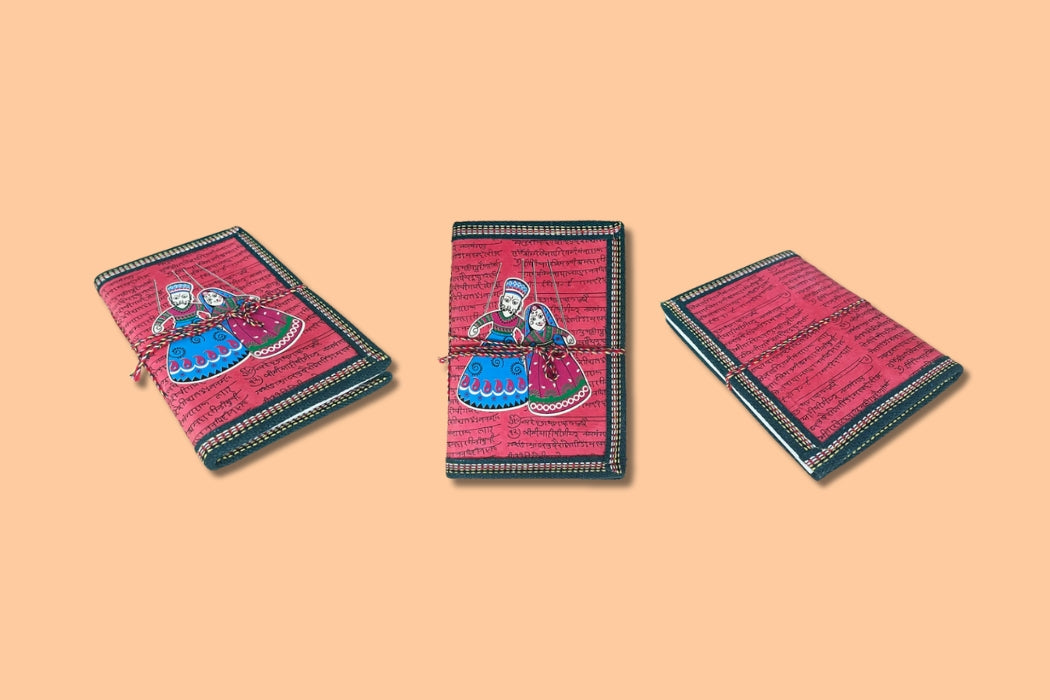
Reviving Rajasthani Folk Art: The Charm of Kathputli in Modern Stationery
Introduction
While the world is spinning around in the web of digital trends and fast-moving lifestyles, the true nature of traditional Indian art gets lost somewhere. But, through all the bustle, there is a gentle movement of bringing these ancient traditions back to life — one notebook, one bookmark, one pen holder at a time. The modern stationery is discovering a new lease of life in Rajasthani folk art, particularly the iconic Kathputli (traditional string puppetry). At Diwam Handicrafts, we do believe in the fusion of culture and creativity to keep this colorful heritage oscillating not only in museums but also on every desk, shelf, and study table.
The Legacy of Kathputli: A Dying Art Form
Kathputli, a centuries-old art that means “wooden puppet,” is an art originating from Rajasthan. These puppets are handmade, adorned in colorful traditional clothes, and brought to life by puppeteers with the help of stories, music, and dance. In the past, Kathputli shows entertained royal courts and villages with folklore, moral stories, and local legends on the stage, which used to be performed during festivals by the Kathputli performers.
But the folk tradition has failed to survive with the advent of digital entertainment and modern toys. Several families that produced puppets have been forced to abandon this art because they were not recognized and rewarded accordingly. Kathputli is currently listed as an art that is dying, and only a handful of artisan communities still practice the art.
Diwam Handicrafts Mission: Preserving Heritage with Purpose
Our mission at Diwam Handicrafts is quite simple yet powerful—to keep Indian folk art alive by introducing it in everyday goods. Our stationeries has been designed in partnership with local artisans with the soul of traditional Rajasthani art, especially Kathputli. From puppet ornaments on journals to bookmarks that embrace the puppet aesthetics, every item is not only a thing—it’s a tale of culture, craftsmanship, and bond.
We are not only out to sell. We aim to empower. With the offering of fair wages and consistent work, we make sure that the art of Kathputli doesn’t simply survive but thrives. Every time that an individual uses any Diwam Handicrafts product, he or she holds part of India’s living history in their hands.
Consumer Connection: Why Folk Art in Stationery Matters Today
With the current fast life, which is also rather impersonal, people look for meaning in the things they use. This is where mass-produced things could have a purpose, but it lacks soul. Handcrafted, culturally rich products take us to a place deeper — identity, heritage, and footing in the authentic.
By using stationery with folk art, you use this as a way to subtly celebrate culture. Either giving a handcrafted notebook to a friend or writing in a diary with Kathputli pictures, each of those interactions becomes more personal and special. It reminds us that in traditions lies the beauty, and the stories from the past can be a source of inspiration in the present.
Furthermore, funding folk art products is a way to enable a more sustainable and ethical marketplace. It is the act of going with slow, mindful design instead of fast consumption. And this is important to many a young consumer today more than anything.
Looking Ahead: The Future of Folk Art in Lifestyle Products
The story does not end with stationery in the case of folk art. It’s just the beginning. With growing awareness and demand, there is huge potential for taking these traditional designs to other arts of lifestyle—home décor and textiles to fashion accessories and office utilities.
We’re even already trying out new methods of promoting the Kathputli art that is beyond paper in Diwam Handicrafts. Think cushion covers with puppet embroidery, wall art based on puppet tales, or mobile covers with the traditional prints of the puppet. The conservative and the innovative are an infinite combination.
We further believe that if people are to be taught the history and the meaning behind these art forms, then it will enhance their appreciation. The ways we are planning to create more awareness and directly reach the artisans to the audience include workshops, exhibitions, and digital storytelling.
Conclusion
Kathputli is not only an art but also a voice of our past, a reflection of our culture, and a heritage that needs to be preserved. With Diwam Handicrafts, we not only resurrect this beautiful tradition but also extend it to life in the modern period. By bringing Kathputli into the contemporary stationary, we establish a connection between heritage and contemporaneity, functionality and art, and the past and the current moment.
In each one of our notebooks, in each of our designs, and in every handcrafted detail, we tell a story — one that should be heard, shared, and loved.
Let us keep the strings of tradition well, one creation at a time.

Comments
Leave a comment